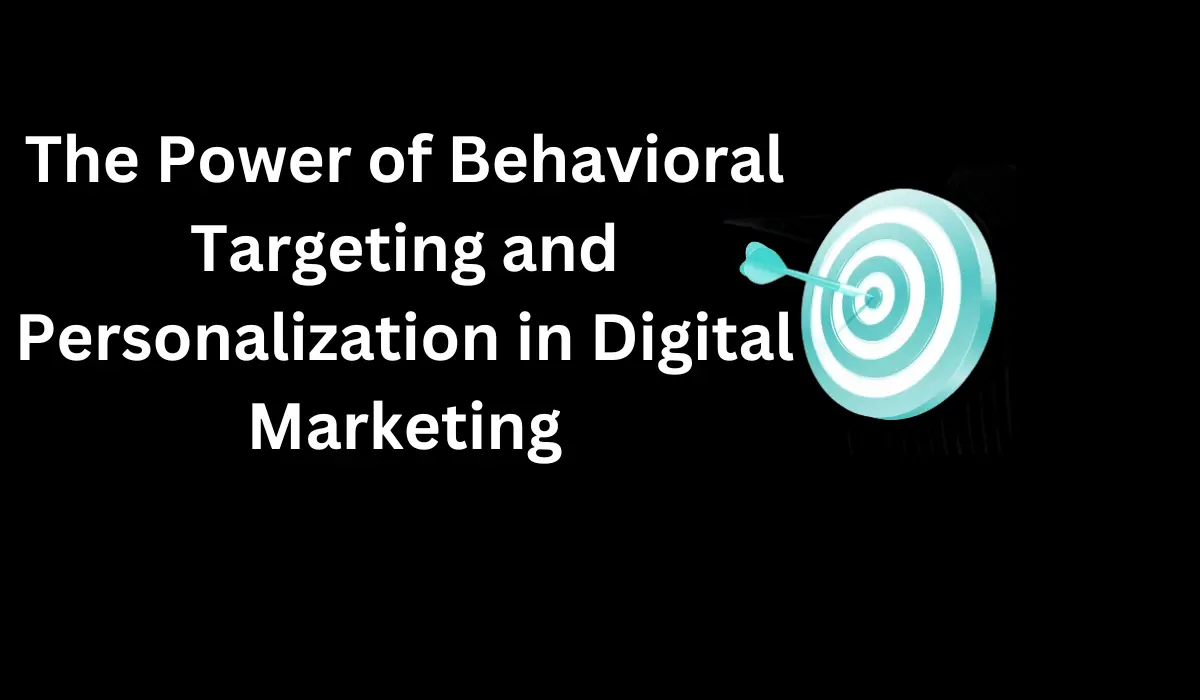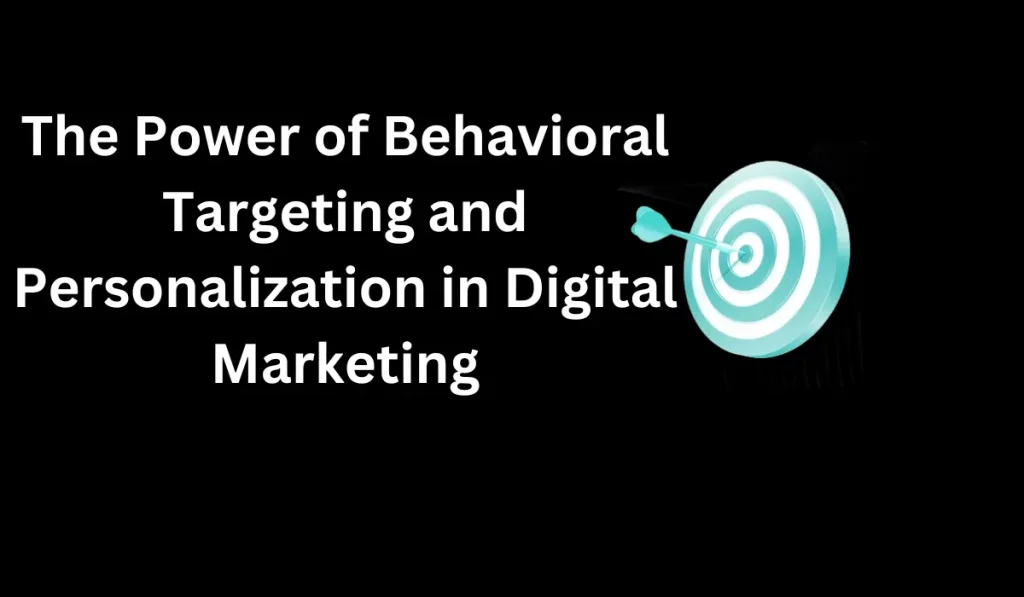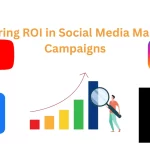In today’s digital age, where consumers are inundated with an overwhelming amount of content and advertisements, standing out from the crowd has become increasingly challenging for marketers. However, amidst this noise, there lies a powerful tool that has revolutionized the way businesses connect with their audience: behavioral targeting and personalization. In this context, we talked about the power of behavioral targeting and personalization in digital marketing.
Let’s jump into the deep:
By leveraging data-driven insights and advanced technologies, marketers can deliver tailored content and experiences that resonate with individual preferences and behaviors, ultimately driving engagement, loyalty, and conversions.
Understanding Behavioral Targeting:
Behavioral targeting is a marketing strategy that involves delivering personalized content, advertisements, or recommendations to users based on their online behavior and preferences. This approach utilizes data collected from users’ past interactions with digital platforms, such as websites visited, searches conducted, content consumed, and products purchased or viewed.
The primary goal of behavioral targeting is to segment users into distinct groups or audiences based on their behaviors and interests, allowing marketers to tailor their messaging and offerings to match the specific needs and preferences of each group. By analyzing patterns in user behavior, marketers can identify common traits, preferences, and intents, enabling them to deliver more relevant and engaging experiences to their target audience.
Behavioral targeting relies on various tracking technologies, such as cookies, tracking pixels, and browser fingerprinting, to gather data about users’ online activities across different websites and platforms. This data is then used to create user profiles or personas, which serve as the basis for targeting personalized content and advertisements.
Overall, behavioral targeting enables marketers to move beyond traditional demographic or geographic segmentation and instead focus on targeting users based on their actual behaviors and interests. By delivering relevant and timely content to users who are most likely to be interested, behavioral targeting can improve engagement, increase conversion rates, and ultimately drive better results for marketing campaigns. However, marketers need to prioritize user privacy and data protection, ensuring that data collection and targeting practices are transparent and compliant with relevant regulations.
The Power of Data in Behavioral Targeting and Personalization
The power of data in behavioral targeting and personalization cannot be overstated. Data serves as the foundation upon which these strategies are built, providing valuable insights into user behavior, preferences, and intent. Here’s a closer look at how data empowers behavioral targeting and personalization:
Understanding User Behavior:
Data allows marketers to gain deep insights into how users interact with digital platforms. By analyzing factors such as browsing history, search queries, content consumption patterns, and purchase behavior, marketers can develop a comprehensive understanding of each user’s interests, preferences, and intent.
Creating Detailed User Profiles:
With data-driven insights, marketers can create detailed user profiles or personas that accurately reflect the characteristics and preferences of their target audience segments. These profiles serve as the basis for segmenting users into distinct groups and tailoring content and offerings to match their specific needs.
Predictive Analytics:
Advanced data analytics techniques, such as predictive analytics, enable marketers to anticipate future behavior and preferences based on past interactions. By leveraging machine learning algorithms and predictive models, marketers can identify patterns and trends in user behavior, allowing them to proactively personalize content and recommendations to meet users’ needs.
Real-time Personalization:
Data enables real-time personalization, where marketers can dynamically adjust content and offerings based on users’ current behavior and context. For example, an e-commerce website may display personalized product recommendations based on a user’s browsing history or items added to their shopping cart, enhancing the overall user experience and driving conversion rates.
Optimizing Campaign Performance:
By continuously monitoring and analyzing data metrics such as engagement rates, click-through rates, and conversion rates, marketers can assess the effectiveness of their behavioral targeting and personalization efforts. This data-driven approach allows marketers to identify areas for optimization and refinement, ultimately improving the campaign.
Creating Personalized Experiences:
Creating personalized experiences using behavioral data is a powerful way for businesses to connect with their audience on a deeper level and drive meaningful engagement. Here’s how businesses can leverage behavioral data to craft personalized experiences:
Collect Comprehensive Data:
The first step in creating personalized experiences is to collect comprehensive data about your audience’s behavior across various touchpoints. This includes tracking website visits, social media interactions, email engagement, and any other relevant interactions with your brand. Use cookies, tracking pixels, and other tracking technologies to gather this data while ensuring compliance with privacy regulations.
Segment Your Audience:
Once you have collected sufficient data, segment your audience based on common behaviors, interests, and preferences. Group users into distinct segments or personas to better understand their needs and motivations. For example, you might have segments for frequent shoppers, first-time visitors, or users interested in specific product categories.
Tailor Content and Recommendations:
With your audience segments identified, tailor your content and recommendations to match their preferences. Use the data you’ve collected to personalize product recommendations, content suggestions, and promotional offers. For instance, recommend products similar to those previously purchased or viewed by a user, or provide content that aligns with their past interests.
Deliver Timely and Relevant Messaging:
Timing is key when it comes to personalized experiences. Use behavioral data to deliver messages at the right moment in the customer journey. For example, send a follow-up email with personalized product recommendations after a user has browsed your website, or display targeted ads to users who have abandoned their shopping carts.
Optimize Across Channels:
Personalization should extend across all channels and touchpoints where you interact with your audience. Whether it’s your website, email campaigns, social media channels, or mobile apps, ensure a consistent and personalized experience across all platforms. Use data integration tools to synchronize customer data and deliver seamless experiences across channels.
Test and Iterate:
Personalization is an ongoing process that requires constant testing and iteration. Monitor the performance of your personalized experiences using key metrics such as engagement rates, conversion rates, and customer satisfaction scores. Experiment with different messaging, content formats, and personalization techniques to continuously improve your efforts.
Respect Privacy and Transparency:
While personalization relies on user data, it’s important to prioritize privacy and transparency. Be transparent about your data collection practices and give users control over their personal information. Respect user preferences regarding data usage and provide clear opt-in/opt-out mechanisms for personalized experiences.
Also Read
Benefits of Behavioral Targeting and Personalization in Digital Marketing:
Behavioral targeting and personalization offer numerous benefits for digital marketing efforts, allowing businesses to effectively reach and engage their target audience in a more meaningful way. Here are some key benefits:
Improved Relevance:
Behavioral targeting and personalization enable marketers to deliver content and advertisements that are highly relevant to individual user’s interests, preferences, and behaviors. By understanding what users are interested in, marketers can tailor their messaging to resonate more effectively with their audience, leading to higher engagement and conversion rates.
Increased Engagement:
Personalized experiences are more likely to capture the attention of users and keep them engaged with your brand. By delivering content and offers that are tailored to their needs and interests, you can encourage users to spend more time interacting with your website, emails, or ads, resulting in greater brand engagement and loyalty.
Higher Conversion Rates:
When content and offers are personalized based on user behavior, they are more likely to convert into sales or leads. By delivering the right message to the right person at the right time, behavioral targeting and personalization can significantly increase conversion rates and drive more valuable actions, such as purchases or sign-ups.
Enhanced Customer Experience:
Personalization plays a crucial role in enhancing the overall customer experience. By anticipating and fulfilling the needs of individual users, businesses can create a more seamless and enjoyable experience across all touchpoints, from website visits to customer support interactions. This leads to greater customer satisfaction and loyalty over time.
Better ROI:
By targeting your marketing efforts more effectively and delivering personalized experiences that resonate with your audience, you can achieve a higher return on investment (ROI) for your digital marketing campaigns. Personalization helps to optimize marketing spend by focusing resources on the most valuable audience segments and driving more efficient outcomes.
Increased Customer Retention:
Personalization fosters stronger connections with your audience and encourages repeat interactions with your brand. By continuously delivering personalized experiences that meet their needs and preferences, you can build long-term relationships with customers and increase customer retention rates over time.
Data-Driven Insights:
Behavioral targeting and personalization generate valuable data insights that can be used to refine and optimize marketing strategies over time. By analyzing user behavior and engagement metrics, marketers can gain a deeper understanding of their audience and identify opportunities for improvement in their campaigns.
Challenges and Considerations:
While behavioral targeting and personalization offer tremendous opportunities for marketers, they also come with their fair share of challenges and considerations. Chief among these is the need to prioritize user privacy and data protection. With the growing emphasis on data privacy regulations such as GDPR and CCPA, marketers must ensure compliance and transparency in their data collection and usage practices. Additionally, there’s the risk of overstepping boundaries and making users feel uncomfortable or intruded upon if personalization efforts become too intrusive or aggressive.
Also Read
The Future of Personalization:
Looking ahead, the future of behavioral targeting and personalization promises even greater advancements and innovations. With the continued evolution of artificial intelligence and machine learning technologies, marketers will be able to harness the power of predictive analytics to anticipate user behavior and preferences with unprecedented accuracy. Moreover, as consumers increasingly demand authentic and meaningful interactions with brands, personalization efforts will need to focus not only on data-driven insights but also on building genuine connections and fostering trust.
End Words
In an increasingly crowded and competitive digital landscape, the ability to deliver personalized experiences that resonate with individual preferences and behaviors has become essential for marketers. Behavioral targeting and personalization in digital marketing offer a powerful means of cutting through the noise and engaging audiences in meaningful ways. By leveraging data-driven insights and advanced technologies, marketers can create tailored content and experiences that drive engagement, foster loyalty, and ultimately, deliver tangible results for their businesses. As we look to the future, the possibilities for personalization are limitless, offering marketers the opportunity to forge deeper connections with their audience and unlock new levels of success in the digital realm.







